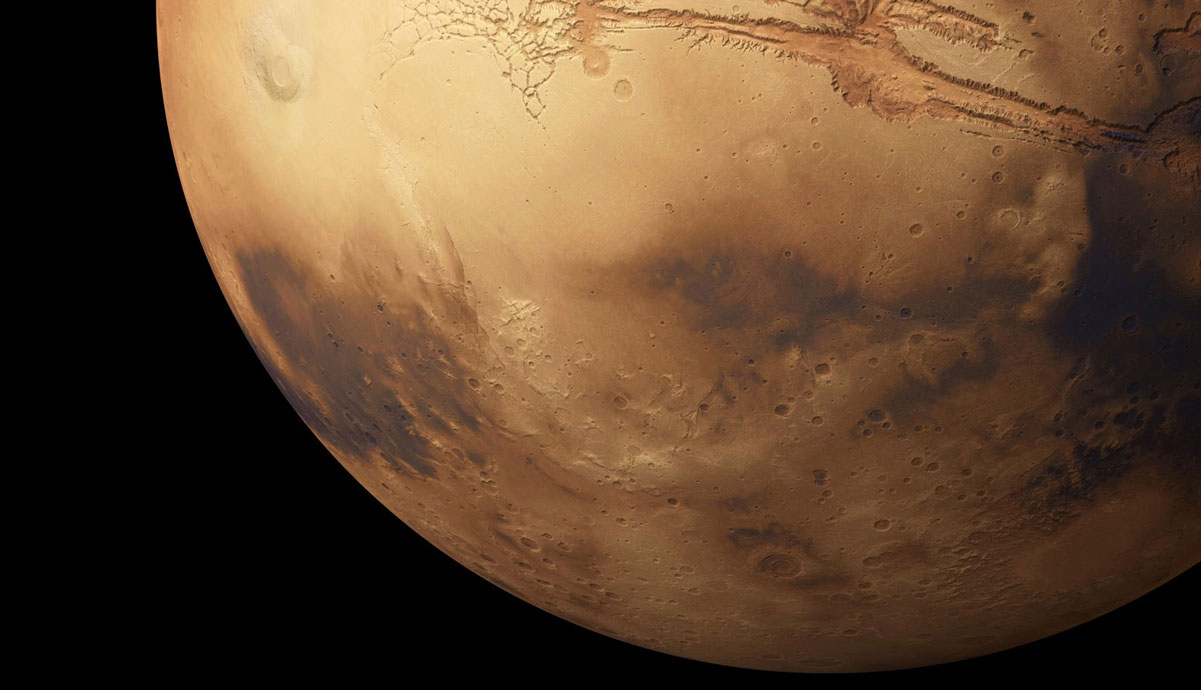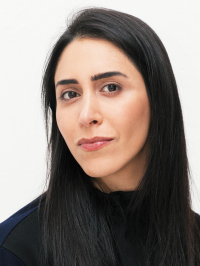Mankind’s Future on Mars

Covers all significant Mars‐related topics including robotic exploration, human landing site selection, Mars transport (transit and orbit to surface), Geology, Mining and ISRU, Settlement, Energy, food production, pressurized habitat fabrication from local materials, architecture above and below ground, low gravity biology and reproduction issues, Mars terraforming, sources of volatiles.

Track Chair:
John Strickland
National Space Society Board of Directors
John Strickland has BA degrees in Anthropology and in Computer Science. He retired as a senior Analyst for the State of Texas in Austin in June, 2009 after 20 years. He is a member of the Board of Directors of the National Space Society and also the Protect Lake Travis Association in Austin, TX. He chairs the NSS Awards Committee and the Roadmap Committee, serves as the NSS assistant Treasurer, is on the NSS Finance and Investment committees, and is an Advocate with the Space Frontier Foundation. His specific interests include access to space, re-usable spacecraft, space policy, space solar power, terraforming, space infrastructure, space logistics base design, space settlement construction and lunar and Mars base siting and operation. He contributed chapters to the 1998 edition of Dr. Peter Glaser’s book: “Solar Power Satellites: an Energy System for Earth”, and to the 2005 book “Return to the Moon”, edited by Rick Tumlinson. Since 1976, he has produced articles and papers for “The Humanist”, “L5 News”, “Solar Power”, “Ad Astra”, “Space News”, “NASAWatch”, “The Space Review”, the “Journal for Space Communication”. He is currently finishing work on his two major books “Developing Space” and “Settling Space”. He lives near Austin, Texas.
Track Chair:
John Strickland
National Space Society Board of Directors
John Strickland has BA degrees in Anthropology and in Computer Science. He retired as a senior Analyst for the State of Texas in Austin in June, 2009 after 20 years. He is a member of the Board of Directors of the National Space Society and also the Protect Lake Travis Association in Austin, TX. He chairs the NSS Awards Committee and the Roadmap Committee, serves as the NSS assistant Treasurer, is on the NSS Finance and Investment committees, and is an Advocate with the Space Frontier Foundation. His specific interests include access to space, re-usable spacecraft, space policy, space solar power, terraforming, space infrastructure, space logistics base design, space settlement construction and lunar and Mars base siting and operation. He contributed chapters to the 1998 edition of Dr. Peter Glaser’s book: “Solar Power Satellites: an Energy System for Earth”, and to the 2005 book “Return to the Moon”, edited by Rick Tumlinson. Since 1976, he has produced articles and papers for “The Humanist”, “L5 News”, “Solar Power”, “Ad Astra”, “Space News”, “NASAWatch”, “The Space Review”, the “Journal for Space Communication”. He is currently finishing work on his two major books “Developing Space” and “Settling Space”. He lives near Austin, Texas.
Speaker


Dr. Robert Zubrin
President, Pioneer Astronautics
Mars Society
Robert Zubrin is President of Pioneer Astronautics, an aerospace R&D company located in Lakewood, Colorado. He is also the founder and President of the Mars Society. Formerly a Staff Engineer at Lockheed Martin Astronautics in Denver, he holds a Masters degree in Aeronautics and Astronautics and a Ph.D. in Nuclear Engineering from the University of Washington. Zubrin is the author of 9 books, 15 patents, and over 200 published technical and non-technical papers in the field of space exploration and technology.
Presentation: Travel to and Mars, Base and Settlement Based on BFS Transport.
The ongoing revolution in space launch has radically improved the prospects for the exploration and settlement of Mars. In particular, the rapid development of the Starship system by SpaceX is offering the near term availability of a fully reusable heavy lift booster that also has the capability to transport large exploration missions and considerable numbers of immigrants to the Red Planet.
In this talk we will examine potential utilization of the Starship to support Mars exploration, base building, and colonization. Various options for its operation, including Earth to LEO delivery, LEO to TLI delivery, and one way and round trip transportation to and from Mars will all be considered. We will also examine infrastructure on Mars enabled by the Starship, and power and other local resource utilization requirements generated by the Starship in its various potential modes of operation. An optimal plan for using the Starship to enable the exploration and settlement of Mars will then be presented.
Dr. Robert Zubrin
President, Pioneer Astronautics
Mars Society
Robert Zubrin is President of Pioneer Astronautics, an aerospace R&D company located in Lakewood, Colorado. He is also the founder and President of the Mars Society. Formerly a Staff Engineer at Lockheed Martin Astronautics in Denver, he holds a Masters degree in Aeronautics and Astronautics and a Ph.D. in Nuclear Engineering from the University of Washington. Zubrin is the author of 9 books, 15 patents, and over 200 published technical and non-technical papers in the field of space exploration and technology.
Presentation: Travel to and Mars, Base and Settlement Based on BFS Transport.
The ongoing revolution in space launch has radically improved the prospects for the exploration and settlement of Mars. In particular, the rapid development of the Starship system by SpaceX is offering the near term availability of a fully reusable heavy lift booster that also has the capability to transport large exploration missions and considerable numbers of immigrants to the Red Planet.
In this talk we will examine potential utilization of the Starship to support Mars exploration, base building, and colonization. Various options for its operation, including Earth to LEO delivery, LEO to TLI delivery, and one way and round trip transportation to and from Mars will all be considered. We will also examine infrastructure on Mars enabled by the Starship, and power and other local resource utilization requirements generated by the Starship in its various potential modes of operation. An optimal plan for using the Starship to enable the exploration and settlement of Mars will then be presented.
Doctors’ Panel:
Space Medicine on Mars


Moderator:
Dr. Susan Ip-Jewel
Mars Academy USA
Dr Susan Ip-Jewell is strong advocate for Humans-to-Mars and human Space Exploration focusing on astronautics, space medicine, health and Astro-wellness, tele-surgery, Astro-preneurship and innovations for exploration. Susan has researched on integrating exponential technologies and developing novel countermeasures to support analog astronauts living in isolated and confinement environments (ICE).Susan is the President of Mars Academy USA (MAU), a pioneering organization training analog astronauts, and Mars Medics by offering ” experiential learning with exponential technologies”
Moderator:
Dr. Susan Ip-Jewel
Mars Academy USA
Dr Susan Ip-Jewell is strong advocate for Humans-to-Mars and human Space Exploration focusing on astronautics, space medicine, health and Astro-wellness, tele-surgery, Astro-preneurship and innovations for exploration. Susan has researched on integrating exponential technologies and developing novel countermeasures to support analog astronauts living in isolated and confinement environments (ICE).Susan is the President of Mars Academy USA (MAU), a pioneering organization training analog astronauts, and Mars Medics by offering ” experiential learning with exponential technologies”



Panelist:
Dr. Dwight Holland
Human Systems Integration Associates
Panelist:
Dr. Dwight Holland
Human Systems Integration Associates



Panelist:
Dr. Carlos Salicrup
Mars Academy USA
Panelist:
Dr. Carlos Salicrup
Mars Academy USA



Panelist:
Dr. Maria Harney
Mars Academy USA
Panelist:
Dr. Maria Harney
Mars Academy USA
Policy Panel:
Will Planetary Protection Stop Musk from Building a City on Mars?


Moderator:
Dale Skran
National Space Society
Moderator:
Dale Skran
National Space Society


Panelist:
Dr. Doug Plata
President & Founder, The Space Development Network
Dr. Plata is a physician and public health specialist in Loma Linda, CA. His undergraduate degree was in biophysics and he went on to complete his MD and MPH with specialty training in Family and Preventive Medicine. His primary interest in space is the development of a cost-effective transportation to the Moon based upon lunar polar ice for propellant and the establishment of humanity’s first permanent foothold off Earth. A description of this Plan for Sustainable Space Development can be found at DevelopSpace.info. He has founded a new type of free-to-join space advocacy organization called the Space Development Network which can also be found at DevelopSpace.info.
Panelist:
Dr. Doug Plata
President & Founder, The Space Development Network
Dr. Plata is a physician and public health specialist in Loma Linda, CA. His undergraduate degree was in biophysics and he went on to complete his MD and MPH with specialty training in Family and Preventive Medicine. His primary interest in space is the development of a cost-effective transportation to the Moon based upon lunar polar ice for propellant and the establishment of humanity’s first permanent foothold off Earth. A description of this Plan for Sustainable Space Development can be found at DevelopSpace.info. He has founded a new type of free-to-join space advocacy organization called the Space Development Network which can also be found at DevelopSpace.info.



Panelist:
Michelle Hanlon
For All Moonkind, Inc.
Panelist:
Michelle Hanlon
For All Moonkind, Inc.


Panelist:
Alfred Anzaldua
Alfred Anzaldúa is a 30‐year veteran of space advocacy and Chair of the NSS International Committee, Deputy Chair of the NSS Policy Committee, and a Tucson L5 Space Society officer. He has authored articles in the Space Review, Ad Astra, and other publications, and gives frequent presentations on space‐related issues.
Panelist:
Alfred Anzaldua
Alfred Anzaldúa is a 30‐year veteran of space advocacy and Chair of the NSS International Committee, Deputy Chair of the NSS Policy Committee, and a Tucson L5 Space Society officer. He has authored articles in the Space Review, Ad Astra, and other publications, and gives frequent presentations on space‐related issues.
Speakers



John Strickland
National Space Society Board of Directors – Roadmap Committee
John Strickland has BA degrees in Anthropology and in Computer Science. He retired as a senior Analyst for the State of Texas in Austin in June, 2009 after 20 years. He is a member of the Board of Directors of the National Space Society and also the Protect Lake Travis Association in Austin, TX. He chairs the NSS Awards Committee and the Roadmap Committee, serves as the NSS assistant Treasurer, is on the NSS Finance and Investment committees, and is an Advocate with the Space Frontier Foundation. His specific interests include access to space, re-usable spacecraft, space policy, space solar power, terraforming, space infrastructure, space logistics base design, space settlement construction and lunar and Mars base siting and operation. He contributed chapters to the 1998 edition of Dr. Peter Glaser’s book: “Solar Power Satellites: an Energy System for Earth”, and to the 2005 book “Return to the Moon”, edited by Rick Tumlinson. Since 1976, he has produced articles and papers for “The Humanist”, “L5 News”, “Solar Power”, “Ad Astra”, “Space News”, “NASAWatch”, “The Space Review”, the “Journal for Space Communication”. He is currently finishing work on his two major books “Developing Space” and “Settling Space”. He lives near Austin, Texas.
Presentation: Practical Mars Terraforming – Mars Needs Nitrogen
For now, Mars is the only planet in our solar system that can be terraformed, since it has enough gravity, a day length similar to Earth’s, and, as a normally accreted planet, has most of the volatiles and minerals needed to support life and civilization. It’s modest atmosphere and surface temperatures are tolerable to humans in pressure suits. A main purpose of space settlement is to provide backup copies of Earth’s biosphere to the extent practical. Without terraforming Mars, all of the biosphere would need to be inside pressurized habitats, mostly under the surface in zoo-like conditions, due to the roughly 245 millisiverts of space radiation (GCR) and very low pressure on the surface. Plants need nitrogen, and planetary atmospheres need the bulk of air pressure from a relatively non-reactive gas like nitrogen to dilute future nitrogen-oxygen atmospheres and to block the GCR. Huge reserves of nitrogen exist in the outer solar system, which could give Mars the bulk of its atmospheric pressure back. Given the development of fusion power and fusion rocket engines, about 2.5 million cubic kilometers of semisolid nitrogen can be moved from Sputnik Planita on Pluto to Mars without creating more craters within about 200 years.
John Strickland
National Space Society Board of Directors – Roadmap Committee
John Strickland has BA degrees in Anthropology and in Computer Science. He retired as a senior Analyst for the State of Texas in Austin in June, 2009 after 20 years. He is a member of the Board of Directors of the National Space Society and also the Protect Lake Travis Association in Austin, TX. He chairs the NSS Awards Committee and the Roadmap Committee, serves as the NSS assistant Treasurer, is on the NSS Finance and Investment committees, and is an Advocate with the Space Frontier Foundation. His specific interests include access to space, re-usable spacecraft, space policy, space solar power, terraforming, space infrastructure, space logistics base design, space settlement construction and lunar and Mars base siting and operation. He contributed chapters to the 1998 edition of Dr. Peter Glaser’s book: “Solar Power Satellites: an Energy System for Earth”, and to the 2005 book “Return to the Moon”, edited by Rick Tumlinson. Since 1976, he has produced articles and papers for “The Humanist”, “L5 News”, “Solar Power”, “Ad Astra”, “Space News”, “NASAWatch”, “The Space Review”, the “Journal for Space Communication”. He is currently finishing work on his two major books “Developing Space” and “Settling Space”. He lives near Austin, Texas.
Presentation: Practical Mars Terraforming – Mars Needs Nitrogen
For now, Mars is the only planet in our solar system that can be terraformed, since it has enough gravity, a day length similar to Earth’s, and, as a normally accreted planet, has most of the volatiles and minerals needed to support life and civilization. It’s modest atmosphere and surface temperatures are tolerable to humans in pressure suits. A main purpose of space settlement is to provide backup copies of Earth’s biosphere to the extent practical. Without terraforming Mars, all of the biosphere would need to be inside pressurized habitats, mostly under the surface in zoo-like conditions, due to the roughly 245 millisiverts of space radiation (GCR) and very low pressure on the surface. Plants need nitrogen, and planetary atmospheres need the bulk of air pressure from a relatively non-reactive gas like nitrogen to dilute future nitrogen-oxygen atmospheres and to block the GCR. Huge reserves of nitrogen exist in the outer solar system, which could give Mars the bulk of its atmospheric pressure back. Given the development of fusion power and fusion rocket engines, about 2.5 million cubic kilometers of semisolid nitrogen can be moved from Sputnik Planita on Pluto to Mars without creating more craters within about 200 years.


Vera Mulyani
CEO & Founder, Mars City Design
Vera Mulyani, A lifetime innovative and visionary leader, with multidisciplinary skills in art and in business, is the CEO, the Founder and the Executive Director for Marschitecture of Mars City Design® and the President of Mars City Foundation (501c3).
Mars City Design www.marscitydesign.com is an innovation platform that unites thought leaders and visionaries from multidisciplinary STEAM background to pioneer in designing the blueprint of the urban infrastructure and human lifestyle for Mars, applicable to future cities on Earth.
Mulyani is also a Founder and CMO of 8ense, LLC, and an Executive Director for SpaceportLA, www.spaceportla.com an event based non-profit organizations, connecting the biggest space community in Southern California with space entrepreneurship, education and collaboration.
Mulyani developed a distinct concept of Recycling Cities , which consisted of transforming damaged areas, former industrial and cosmopolitan into self-sustaining Green Zones, (ex. Ruhr, Germany) to better integrate a natural environment into human living space. Mulyani’s concept of urbanism advocates a self-sustaining lifestyle.
Mulyani’s second master’s degree was in Visual Arts (Cinematography), in New York. Her award winning short films were presented at the prestigious Cannes Film Festival
Presentation: Mars Surface Architecture
The Alpha 3.0 Mars habitat is inspired by the naturally formed Barchan sand dunes which are found spread across the Martian landscape. These dunes can provide (if integrated) a substantial layer of protection from micrometeorites, direct radiation and other loose debris. Some part of our overall structure will make use of Mars indigenous materials; Basaltic rocks as aggregate, polyethylene as polymer, basalt fiber, basalt based cement and molten sulfur. Alpha 3.0 3D Printing technology is based on additive manufacturing, vulcanization or sintering knowledge. Alpha 3.0 incorporates a structurally strong and iconic shrouded arch that encapsulates a dome shaped habitat, with an organic interior form, designed to move as one structure. Alpha 3.0 unique, organic interior design will feature an ergonomically finished interior that will follow LEED standards and will include sleeping quarters, kitchen area, workout area, lounge areas, lab areas, and an isolated biohazard medical bay. The heart of the living area is reserved for a “greenhouse” to grow crops. Alpha’s 3D printing approach, using 90% of in-situ material and 10% of recycled waste, results a structurally solid, safe, efficient, practical and sustainable habitat. In a long duration mission, this design allows the crews to live in comfort.
Vera Mulyani
CEO & Founder, Mars City Design
Vera Mulyani, A lifetime innovative and visionary leader, with multidisciplinary skills in art and in business, is the CEO, the Founder and the Executive Director for Marschitecture of Mars City Design® and the President of Mars City Foundation (501c3).
Mars City Design www.marscitydesign.com is an innovation platform that unites thought leaders and visionaries from multidisciplinary STEAM background to pioneer in designing the blueprint of the urban infrastructure and human lifestyle for Mars, applicable to future cities on Earth.
Mulyani is also a Founder and CMO of 8ense, LLC, and an Executive Director for SpaceportLA, www.spaceportla.com an event based non-profit organizations, connecting the biggest space community in Southern California with space entrepreneurship, education and collaboration.
Mulyani developed a distinct concept of Recycling Cities , which consisted of transforming damaged areas, former industrial and cosmopolitan into self-sustaining Green Zones, (ex. Ruhr, Germany) to better integrate a natural environment into human living space. Mulyani’s concept of urbanism advocates a self-sustaining lifestyle.
Mulyani’s second master’s degree was in Visual Arts (Cinematography), in New York. Her award winning short films were presented at the prestigious Cannes Film Festival
Presentation: Mars Surface Architecture
The Alpha 3.0 Mars habitat is inspired by the naturally formed Barchan sand dunes which are found spread across the Martian landscape. These dunes can provide (if integrated) a substantial layer of protection from micrometeorites, direct radiation and other loose debris. Some part of our overall structure will make use of Mars indigenous materials; Basaltic rocks as aggregate, polyethylene as polymer, basalt fiber, basalt based cement and molten sulfur. Alpha 3.0 3D Printing technology is based on additive manufacturing, vulcanization or sintering knowledge. Alpha 3.0 incorporates a structurally strong and iconic shrouded arch that encapsulates a dome shaped habitat, with an organic interior form, designed to move as one structure. Alpha 3.0 unique, organic interior design will feature an ergonomically finished interior that will follow LEED standards and will include sleeping quarters, kitchen area, workout area, lounge areas, lab areas, and an isolated biohazard medical bay. The heart of the living area is reserved for a “greenhouse” to grow crops. Alpha’s 3D printing approach, using 90% of in-situ material and 10% of recycled waste, results a structurally solid, safe, efficient, practical and sustainable habitat. In a long duration mission, this design allows the crews to live in comfort.


Dr. Pascal Lee
Mars Institute
Dr Pascal Lee is a planetary scientist with the Mars Institute, the SETI Institute, and NASA Ames Research Center in Mountain View, California. His research focuses on water on Mars, the Moon, and Mars’ moons, Phobos and Deimos, and on planning their future exploration by humans and robots. Dr Lee has led over 30 expeditions to the Arctic and Antarctica for planetary analog studies. He is director of the NASA Haughton-Mars Project, the leading Moon/Mars analog field research project on Devon Island,
High Arctic. Dr Lee recently led the Northwest Passage Drive Expedition, the subject of the award-winning documentary film Passage To Mars (2016). His first book, Mission: Mars, won the 2015 Prize for Excellence in children’s science books from the American Association for the Advancement of Science. In his free time, Pascal likes to be walked by his dogs, fly, and paint. He is an FAA-certified helicopter commercial pilot and flight instructor, and an artist member of the International Association of Astronomical Artists.
Presentation: Ice-Rich Lava Tubes on Earth: Implications for the Moon and
Mars
Lava tube candidates have been identified near the North Pole of the Moon and at high altitude on the flanks of Mars’ giant volcanoes. Thermal conditions in such caves could allow H2O ice, if present, to be stable over geologic timescales. The exploration of ice-rich lava tubes on Earth yields interesting implications for their potential counterparts on the Moon and Mars. As on Earth, massive ice inside lunar or Martian caves would be expected to form subterranean glaciers, but ice-rock interactions would also likely promote cave collapse.
Dr. Pascal Lee
Mars Institute
Dr Pascal Lee is a planetary scientist with the Mars Institute, the SETI Institute, and NASA Ames Research Center in Mountain View, California. His research focuses on water on Mars, the Moon, and Mars’ moons, Phobos and Deimos, and on planning their future exploration by humans and robots. Dr Lee has led over 30 expeditions to the Arctic and Antarctica for planetary analog studies. He is director of the NASA Haughton-Mars Project, the leading Moon/Mars analog field research project on Devon Island,
High Arctic. Dr Lee recently led the Northwest Passage Drive Expedition, the subject of the award-winning documentary film Passage To Mars (2016). His first book, Mission: Mars, won the 2015 Prize for Excellence in children’s science books from the American Association for the Advancement of Science. In his free time, Pascal likes to be walked by his dogs, fly, and paint. He is an FAA-certified helicopter commercial pilot and flight instructor, and an artist member of the International Association of Astronomical Artists.
Presentation: Ice-Rich Lava Tubes on Earth: Implications for the Moon and
Mars
Lava tube candidates have been identified near the North Pole of the Moon and at high altitude on the flanks of Mars’ giant volcanoes. Thermal conditions in such caves could allow H2O ice, if present, to be stable over geologic timescales. The exploration of ice-rich lava tubes on Earth yields interesting implications for their potential counterparts on the Moon and Mars. As on Earth, massive ice inside lunar or Martian caves would be expected to form subterranean glaciers, but ice-rock interactions would also likely promote cave collapse.


Melodie Yashar
Space Exploration Architecture
Melodie Yashar is a designer, researcher and co-founder of Space Exploration Architecture (SEArch+), a group building upon a 10-year portfolio of academic space research and practice developing human-supporting concepts for space exploration. In 2015 SEArch+ was awarded the top prize in NASA’s Phase 1 Centennial Challenge for a 3D-Printed Habitat for their proposal, “Mars Ice House.” SEArch+ maintains ongoing collaboration with NASA Langley conducting feasibility studies for related ice habitat concepts. Melodie is team leader for SEArch+ / Apis Cor’s continued research developing functional prototypes for 3D-printed habitats. SEArch+ / Apis Cor has won first prize within Construction Level 1 and Construction Level 2 of NASA’s Phase 3 3D-Printed Habitat Competition, and fourth place in Virtual Design Level 1. Melodie teaches within the architecture department of Pratt Institute; courses have included studios part of the X-Hab Innovation Challenge for Human Centered Designs, a NASA project collaboration. Melodie has worked as a contractor specializing in human factors with the Human Systems Integration Division at NASA Ames. She received a Master of Architecture from Columbia University and a Master of Human-Computer Interaction from Carnegie Mellon University. She maintains ongoing research interests in the design of augmented environments, human-machine interaction, human performance studies, user experience, and systems considering the human body
Presentation: Autonomously 3-D Printed Surface Habitats
Future ISRU surface habitats on the Moon and Mars will be deployed and autonomously constructed prior to a crew’s arrival. Space Exploration Architecture (SEArch+), is a design collective building upon a 10-year portfolio of academic space research and practice developing human-supporting concepts for exploration and habitation. In 2015 SEArch+ was awarded the top prize in NASA’s Phase 1 Centennial Challenge for a 3D-Printed Habitat for their proposal, Mars Ice House. SEArch+ maintains ongoing collaboration with NASA Langley conducting feasibility studies for related ice habitat concepts, particularly Mars Ice Home. In addition to their work on ice habitats, SEArch+ in collaboration with Apis Cor are investigating surface habitat construction using Martian regolith. Their project, Mars X-House, presents a concept of operations for autonomous construction of a pioneering and durable habitat supporting future human missions to Mars. The habitat design evolved in parallel to research advancing the viability of cementitious 3D-printing in off-world construction, and presents an ISRU-based concrete material for future Mars infrastructure as well as habitat development. X-house celebrates innovations in radiation shielding techniques while allowing natural light to penetrate the structure, supporting the astronaut’s physiological and psychological well-being in a long-duration mission. Our human-centered approach prioritizes safety, redundancy, and the wellbeing of the crew above the Martian surface.
Melodie Yashar
Space Exploration Architecture
Melodie Yashar is a designer, researcher and co-founder of Space Exploration Architecture (SEArch+), a group building upon a 10-year portfolio of academic space research and practice developing human-supporting concepts for space exploration. In 2015 SEArch+ was awarded the top prize in NASA’s Phase 1 Centennial Challenge for a 3D-Printed Habitat for their proposal, “Mars Ice House.” SEArch+ maintains ongoing collaboration with NASA Langley conducting feasibility studies for related ice habitat concepts. Melodie is team leader for SEArch+ / Apis Cor’s continued research developing functional prototypes for 3D-printed habitats. SEArch+ / Apis Cor has won first prize within Construction Level 1 and Construction Level 2 of NASA’s Phase 3 3D-Printed Habitat Competition, and fourth place in Virtual Design Level 1. Melodie teaches within the architecture department of Pratt Institute; courses have included studios part of the X-Hab Innovation Challenge for Human Centered Designs, a NASA project collaboration. Melodie has worked as a contractor specializing in human factors with the Human Systems Integration Division at NASA Ames. She received a Master of Architecture from Columbia University and a Master of Human-Computer Interaction from Carnegie Mellon University. She maintains ongoing research interests in the design of augmented environments, human-machine interaction, human performance studies, user experience, and systems considering the human body
Presentation: Autonomously 3-D Printed Surface Habitats
Future ISRU surface habitats on the Moon and Mars will be deployed and autonomously constructed prior to a crew’s arrival. Space Exploration Architecture (SEArch+), is a design collective building upon a 10-year portfolio of academic space research and practice developing human-supporting concepts for exploration and habitation. In 2015 SEArch+ was awarded the top prize in NASA’s Phase 1 Centennial Challenge for a 3D-Printed Habitat for their proposal, Mars Ice House. SEArch+ maintains ongoing collaboration with NASA Langley conducting feasibility studies for related ice habitat concepts, particularly Mars Ice Home. In addition to their work on ice habitats, SEArch+ in collaboration with Apis Cor are investigating surface habitat construction using Martian regolith. Their project, Mars X-House, presents a concept of operations for autonomous construction of a pioneering and durable habitat supporting future human missions to Mars. The habitat design evolved in parallel to research advancing the viability of cementitious 3D-printing in off-world construction, and presents an ISRU-based concrete material for future Mars infrastructure as well as habitat development. X-house celebrates innovations in radiation shielding techniques while allowing natural light to penetrate the structure, supporting the astronaut’s physiological and psychological well-being in a long-duration mission. Our human-centered approach prioritizes safety, redundancy, and the wellbeing of the crew above the Martian surface.
